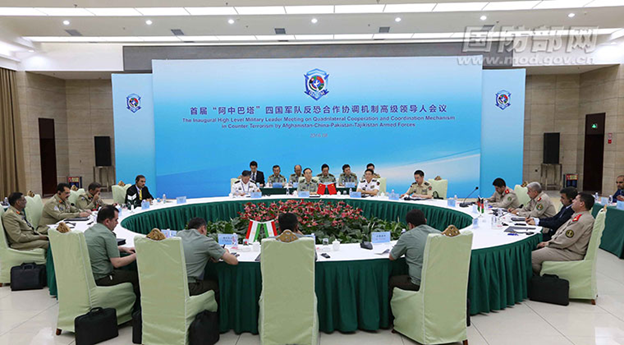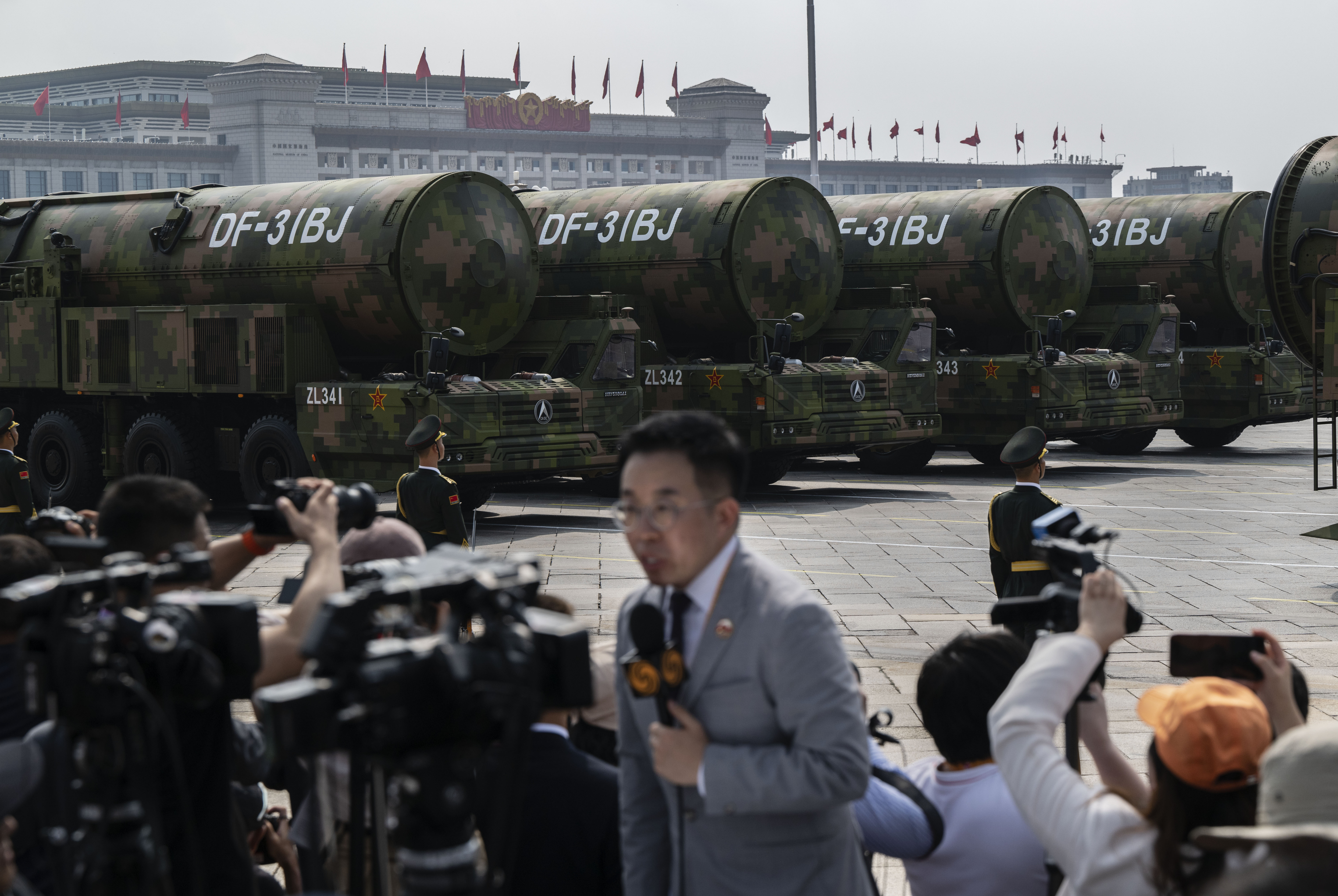
China’s Evolving Security Presence in Afghanistan and Central Asia
China’s Evolving Security Presence in Afghanistan and Central Asia
Introduction
In December, officials from the Islamic Republic of Afghanistan told the Hindustan Times that a network of ten nationals from the People’s Republic of China (PRC) were detained in Kabul for organizing a “terrorist cell.” Afghanistan’s National Directorate of Security (NDS) began a crackdown on the alleged spies on December 10, 2020, and officials reported that Beijing had pressured President Ashraf Ghani’s government to suppress reports of the incident (Zee News, December 19, 2020; Hindustan Times, December 25, 2020). In early January, Afghanistan reportedly released the ten Chinese nationals and allowed them to return to China (Hindustan Times, January 4).
The alleged spies are believed to be linked to China’s Ministry of State Security (MSS) and were reportedly gathering information about al-Qaeda. Some in the Kabul security establishment believe the operatives were working to entrap Eastern Turkestan Islamic Movement (ETIM) fighters in Afghanistan, an internationally recognized terrorist group that China accuses of fomenting separatism in the Xinjiang Uyghur Autonomous Region (XUAR) (Hindustan Times, December 25, 2020).[1]
China is deeply concerned about the dangers of instability and transnational terrorism spilling across its border with Afghanistan. In recent years, Beijing has stepped up cooperation with Kabul on border security and provided funding to Afghanistan to establish a mountain brigade to patrol the Wakhan Corridor (SCMP, August 28, 2018). This espionage revelation underlines China’s willingness to confront perceived threats across its borders, with implications for the role that Beijing will play in Afghanistan and Central Asia as the United States draws down its military presence in the region.
China’s Anxiety over the Afghan Security Void
Beijing’s involvement in Afghanistan is partially motivated by its palpable anxiety over the threats of terrorism, ideology and weapons flowing across the border into China and Xinjiang in particular. At home, China has used a variety of draconian methods to battle the real and perceived threats of terrorism and separatism, most notably including the forced internment of a million or more Uyghurs and other ethnic minorities in detention camps (China Brief, May 15, 2018; ASPI, September 2020).
These dramatic measures have increased support for ETIM and its offshoot, the Turkistan Islamic Party (TIP)–Uyghur separatist groups China accuses of orchestrating terrorist attacks–from al-Qaeda and the Islamic State (IS). Several thousand Chinese Uyghurs are estimated to be a part of al-Qaeda’s global network, and the leadership of al-Qaeda and IS have pledged support for jihad against China in response to its policies in Xinjiang (Terrorism Monitor, May 17, 2019). Beijing is keenly aware of this threat. Chinese government officials and intellectuals alike view countering ETIM in tandem with Kabul as a primary goal in relations with Afghanistan (Charhar Institute, March 26, 2020).
Beijing is hedging its bets in a politically unstable Afghanistan by brokering talks between Kabul and the Taliban and encouraging a political settlement with the U.S. When President Trump called off peace negotiations between the U.S. and the Taliban in 2019 after an attack left an American soldier dead, Beijing quickly attempted to bring Afghan factions together for negotiations (SCMP, October 23, 2019). Taliban officials visited Beijing twice in 2019 for talks and Beijing has repeatedly urged the two sides to reach a political settlement (PRC MFA, May 19, 2020).
Beijing’s concern about instability in Afghanistan is so great that it is not encouraging a hasty U.S. withdrawal, despite its obvious discomfort with an American military presence in a neighboring country. For example, Foreign Minister Wang Yi said that “[t]he US troop withdrawal must proceed in a responsible way without undermining the interests of Afghanistan or other countries in the region” at the third Session of the 13th National People’s Congress (PRC Embassy in Afghanistan, May 25, 2020).
China’s diplomatic efforts in Afghanistan have been accompanied by targeted investments in local and regional security. In 2017, Chinese and Afghan police conducted “joint law enforcement operations” along the border region (PRC Ministry of Defense, February 24, 2017). In 2018, China provided funding for an Afghan training camp in Afghanistan’s Wakhan corridor–a narrow strip of land that links the two countries–to counter terrorism and smuggling. In response to a question about the training base, the Afghan embassy in Beijing emphasized that “there will be no Chinese military personnel of any kind of Afghan soil at any time” (SCMP, August 28, 2018). Janan Mosazai, Afghanistan’s then-ambassador to Beijing, later told journalists that China will provide counter-terror training to Afghan troops on Chinese soil (Reuters, September 6, 2018). Western intelligence has indicated that Beijing has established at least one military base in Tajikistan to monitor the Wakhan Corridor; the U.S. Department of Defense expects China’s military presence in the region to grow in the future (Washington Post, February 18, 2019; DoD Annual Report to Congress, September 2020). The 2016 creation of the Quadrilateral Cooperation and Coordination Mechanism (QCCM), which brought together top military staff from China, Pakistan, Tajikistan and Afghanistan to discuss shared border areas, signified the institutionalization of China’s involvement in regional security (Tolo News, August 4, 2016).

Over the past year, China has increased its humanitarian assistance and engaged in diplomatic signaling to win favor with the Kabul government and the Taliban. As part of its global “mask diplomacy” efforts, Beijing donated substantial medical supplies to aid Afghanistan’s battle against COVID-19 pandemic (China Daily, April 23, 2020). On November 29th, 2020, the combative deputy director of the Chinese Ministry of Foreign Affairs Information Department Zhao Lijian (赵立坚) tweeted a doctored photo of an Australian soldier cutting the throat of an Afghan child, marking the escalation of a diplomatic meltdown between Beijing and Canberra (Zhao Lijian via Twitter, November 29, 2020). The tweet caused a fierce reaction from the Australian government and set off a firestorm on social media (Global Times, December 2, 2020). This incident demonstrates China’s increasingly hard-edged diplomacy and willingness to invoke Afghanistan in the battle for global public opinion, although it is likely that this particular incident arose more as an opportunistic maneuver to bash Australia rather than from a genuine interest in the occupation of Afghanistan.
Belt and Road Initiative & Broader Strategic Considerations
As a neighboring state with significant natural resources that lies at the crossroads of Central Asia, Afghanistan is a potentially promising link in China’s Belt and Road Initiative (BRI). China has repeatedly expressed an interest in investing and building infrastructure in Afghanistan, proposing grand ideas for regional connectivity projects in the war-torn country. Although the total value of Chinese investments in Afghanistan is relatively small compared with neighboring Pakistan, China is Afghanistan’s largest business investor (TRT World, February 18, 2019).[2] In 2008, two Chinese state-owned enterprises (SOEs) won a contract to operate the Mes Aynak mine, although development since then has been slow (Tolo News, March 7, 2020). China National Petroleum Corporation was awarded three Amu Darya basin exploratory blocks in northwestern Afghanistan during the 2011 licensing round (SCMP, May 12, 2017; Oil & Gas Journal, January 16, 2012).
Beijing and Kabul have repeatedly declared their commitment to cooperate on BRI projects and integrate Afghanistan into the China-Pakistan Economic Corridor (Xinhua, April 4, 2020). China has reportedly floated “sizeable investments in energy and infrastructure projects” to encourage the Taliban to reach a peaceful accord with the Afghan government (Financial Times, September 8, 2020). Other proposed projects include a fiber optic cable between Afghanistan and China, but results have yet to materialize (Tolo News, April 22, 2020).
Despite lofty goals and rhetoric, the deterioration of Afghanistan’s security situation and threats to Chinese interests in Central Asia have tempered ambitions in the short-term. Attacks against Afghan security forces and civilians increased by 50 percent in the third quarter of 2020, and prospects for a power sharing agreement between the Afghan government and the Taliban are highly uncertain (SIGAR Quarterly Report to Congress, October 30, 2020). Even existing Chinese projects face significant roadblocks: challenges to the Mes Aynak mine include security concerns, an archaeological dig site on top of the site and land disputes with locals.
Further Chinese investments in Afghanistan could be vulnerable to attacks from militant groups, as has occurred in Pakistan. In November 2018, Balochistan Liberation Army (BLA) separatist militants, who oppose Chinese investments in western Pakistan, launched an attack on the Chinese consulate in Karachi (Xinhua, November 23, 2018). Last summer, four BLA members assaulted the Pakistan Stock Exchange building in Karachi, 40 percent of which is owned by a consortium of Chinese firms (Xinhua, June 29, 2020). While police contained these attacks and killed the assailants without significant loss of civilian life, the incidents may be emblematic of a growing challenge to China’s BRI and CPEC in particular.
For now, China has taken a reserved approach to securing its investments abroad, relying on local forces and Private Security Companies (PSCs) for protection. Pakistani federal and provincial authorities have dedicated more than 15,000 personnel and millions of dollars to protecting CPEC projects. Several Chinese PSCs, including Frontier Services Group and China Overseas Security Group (COSG), have operated in Pakistan in collaboration with local forces (China Brief, May 15, 2020). In 2017, the Chinese PSC HuaXin ZhongAn claimed to have used retired special forces as armed guards to protect Chinese TV crews covering kidnappings in Quetta (Merics, August 16, 2018).
While firm about confronting the threats of separatism and terrorism, Chinese officials are determined to avoid the missteps of the USSR–and more recently the U.S.–in occupying the “graveyard of empires” in Afghanistan and engaging in other costly conflicts abroad. If attacks continue to mount of Chinese nationals and investments, however, Beijing may have to increase its security capabilities in BRI countries, which could lead to a dangerous feedback loop. The Ministry of State Security operation in Kabul may have been an early attempt to expand China’s reach and nip developing threats to China’s interests in the bud.
Conclusion
Details surrounding the Chinese spy ring in Kabul remain scarce, but the development indicates that China is willing to take significant steps to build security capabilities in neighboring countries and neutralize threats to the mainland from abroad. For now, Beijing has concentrated on securing its border with Afghanistan and enhancing counterterrorism and counternarcotic capacities with Central Asian states. Chinese investments in Afghanistan are significant but also limited, and BRI projects are unlikely to be implemented in the current unstable political and security environment. However, threats to Chinese nationals and assets are growing, and China’s increasingly muscular diplomacy and foreign policy may lead to bolder intelligence operations and military deployments to counter regional threats in the future.
Kevin Schwartz is a research analyst at an Asia-focused financial services company and an independent geopolitics writer based in New York. His research focuses on China, the Belt and Road Initiative and U.S. policy toward Asia. He holds a B.A. in international studies from the College of the Holy Cross and previously interned for the U.S. House of Representatives.
Notes
[1] Although the Chinese state has long cited ETIM in particular as evidence for domestic terrorism and justification for its persecution of Muslim minorities in Xinjiang, evidence for the group’s actual activities has been slim. This past October, the U.S. State Department removed ETIM from its list of terrorist organizations because “for more than a decade, there has been no credible evidence that ETIM continues to exist” (RFA, November 5, 2020).
[2] In terms of military and civilian aid, however, China’s contributions fall short of U.S. assistance. See: Vanda Felbab-Brown, “A BRI(dge) too far: The Unfulfilled Promise and Limitations of China’s involvement in Afghanistan,” Global China: Assessing China’s Growing Role in the World, Brookings Institute, June 2020, https://www.brookings.edu/wp-content/uploads/2020/06/FP_20200615_china_afghanistan_felbab_brown.pdf.


